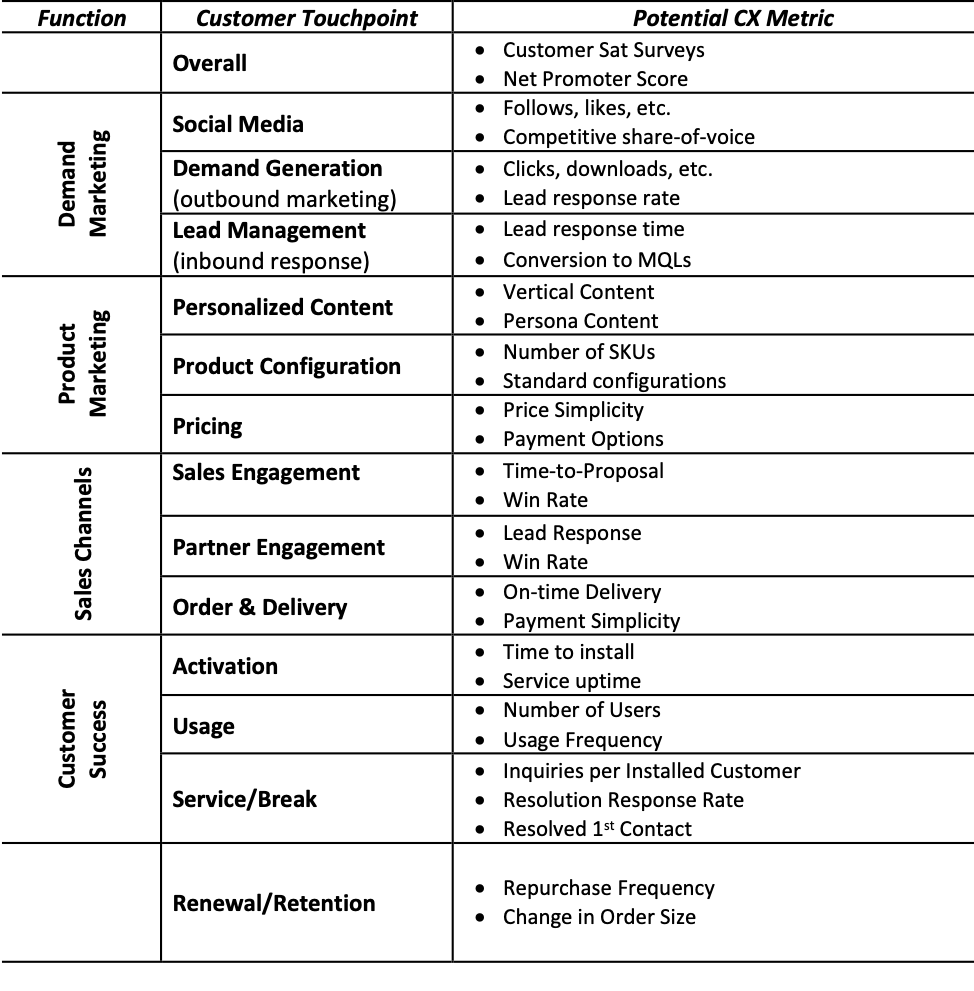Establishing a Customer Success Function Primed for Value Creation: Three Go-dos to Avoid Common Pitfalls in Tech
The XaaS and subscription transition within the technology industry has fundamentally changed the go-to-market model for most technology companies. As companies begin to compete in the new subscription reality, they quickly realize that while the business model brings new benefits, it also forces critical new GTM execution imperatives around customer centricity and commercial agility.
The Role of Customer Success
For many companies, this increased focus has implied a proliferation of the customer success role (CS). Whether this role is a new addition or added as a key element to an existing GTM function, the importance in the technology GTM ecosystem cannot be understated. It’s shifting GTM headcount and technology investments, creating new servicing motions, and, in many cases, beginning to integrate functions like services and software sales that previously may have operated in siloes.
Yet, the biggest issue we see technology companies making today is using the investments in the CS role to define their CX strategy as opposed to defining their CX strategy and using the CS role as a critical enabler to that strategy. There are three very specific fail points when this occurs:
-
Lack of Role Clarity
We recently were speaking with a networking technology client about their new CS team. They stated, “they are really struggling to get a handle on what this means…the team is all over the place and we have yet to see a CX strategy.” Creating a role to drive customer success post-purchase does not mean you are building a broader CX strategy. Customers have experiences with your company well before (and outside of) their interactions with a CS team. Furthermore, CS teams need to be enabled by clear, strategic business priorities. By not declaring a CX strategy ahead of building or defining a CS team, that team is rowing a rudderless boat without top-down leadership. Which leads to the second fail point…
-
Poor Cross-functional Alignment
As CS roles are established, and segmentation and coverage maps ensue, it’s too easy for companies to neglect their impact on other roles. CS should not operate on an island. A client came to us with issues of churn increase and identifying how to align their business more effectively to customer success. While part of the solution was to ensure the addition of a dedicated CS team, the other half of the solution was aligning the other commercial resources to that function. Very specifically, every role within sales (AEs, SEs, etc.) and implementation services began to take on renewal ownership alongside the CS function. Without this cross-functional alignment, CS roles will often exist on an island and lack the pathways to deliver true success.
-
Incomplete CX Measurement
The last fail point is a limited measurement of CX and broader voice of the customer (VoC). If the CS function is utilized to define the CX strategy, an incomplete picture of the actual Customer Experience emerges, and confines health, tracking and other feedback loops just to those interactions. With incomplete measurement, a company can be tricked into thinking they are delivering, when they may be missing the mark in a whole host of areas.
So, with those fail points in mind, what are tangible go-dos to ensure your CS function is set up for success?
-
Conduct a Formal CX Audit
Start from the beginning of the journey before the prospect ever engages with a sales resource to post- first year and/or renewal to provide a holistic view of the customer journey. During this audit focus on identifying the specific definitions of success or failure at those zero moments of truth (ZMOT). The reality is for most B2B technology companies, there are only a handful of truly critical moments in a customer lifecycle where superior or inferior performance are magnified. By focusing on ZMOTs you can clearly articulate where your current friction points exist in a holistic fashion. This is critical to gaining executive buy-in, identifying top priorities and establishing a big picture imperative for a customer-centric culture.
The memorability of a zero moment of truth (ZMOT) – one bad experience can lose a customer
-
Develop a Holistic CX Scorecard
Coming out of a formal CX audit (with clarity to the critical customer-company intersection points) develop a holistic set of CX metrics that tie to all elements of the customer lifecycle. To ensure truly agile feedback loops, a mix of internal and external metrics should be utilized along with qualitative feedback. All too often, a signal may be registered in a metric, but without a corresponding qualitative narrative, the actual dissection (and identification of an appropriate solution) will be missed. In a previous blog, we covered this in greater detail, but the trick is to map these metrics against the customer journey and/or specific internal roles.
-
Design and Align Roles to CX
Armed with a clear understanding of the customer journey, the critical ZMOTs, and the appropriate metrics and feedback loops, take inventory of all your roles and begin to fill gaps. This is obviously where the CS role design is best slotted – AFTER a holistic CX perspective has been established. In aligning roles, ensure cross-functional accountability. The CS team is not the only team needed to deliver renewals or other success metrics. In fact, we are increasingly seeing non-commercial roles take specific CX KPIs like renewal, product usage, etc. as part of their directives. The more each role understands its responsibilities in the CX equation, the more likely you will be to deliver superior CX results and ultimately, revenue success.
Example of Firm-Wide Customer Success KPIs
While every company is investing in customer success, only those companies that truly transition to a customer-centric DNA will align resources effectively and win in the new subscription economy.
Are you using Customer Experience to drive new sales pipeline?
We’ve collected 1,000s of digital data points from across the web to find who is best at using exceptional CX as a differentiator in their go-to-market. Watch the on-demand webinar for:
- 4 Customer Experience mandates for revenue success
- Market spotlights on specific Tech companies’ successes and failures
- 8 best practices for sales, marketing and channel leaders







